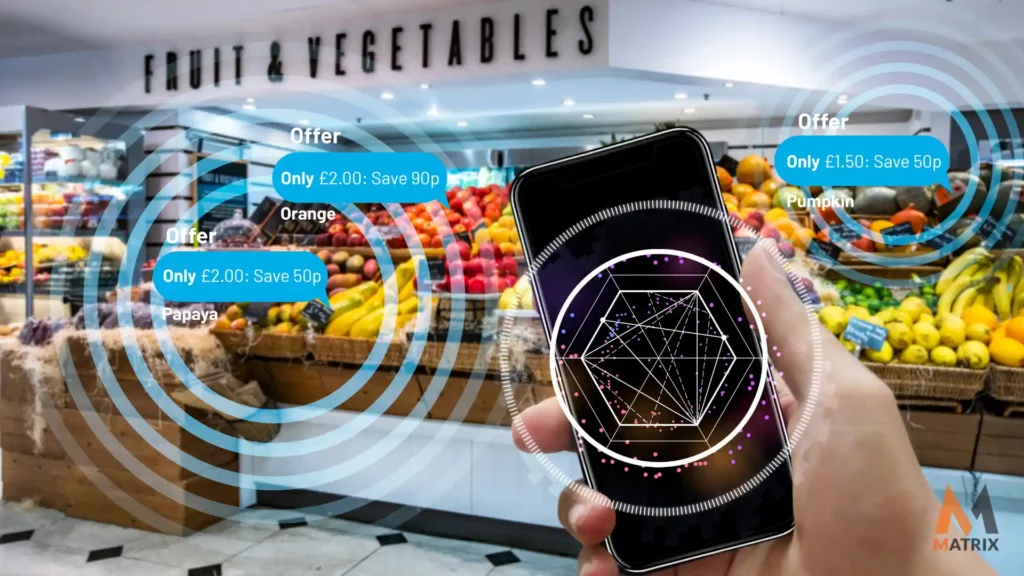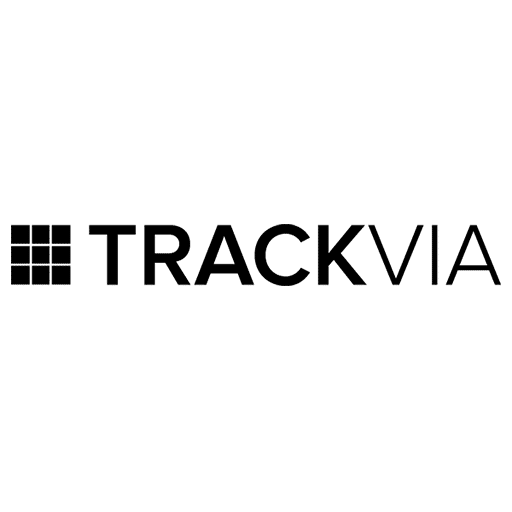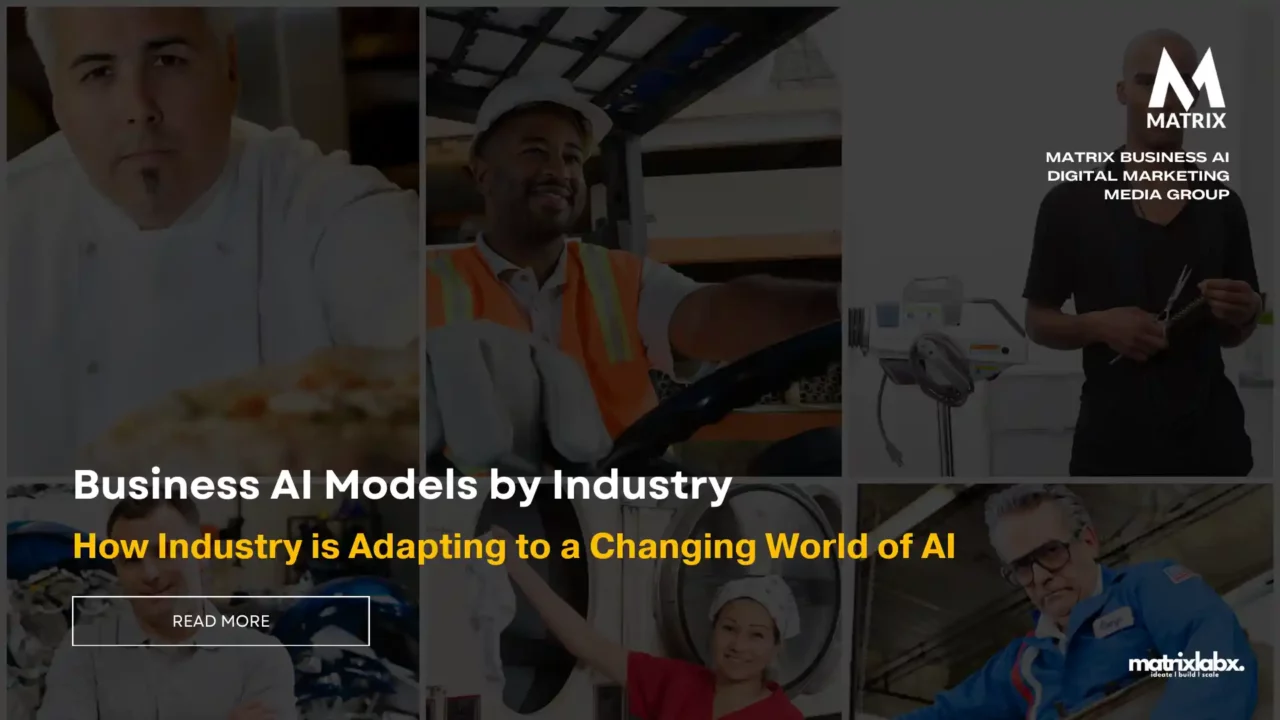Leveraging Vertical Industry Models in AI: Unleashing Innovation for CEOs
As a CIO, my job often involves untangling the intricacies of high-tech spheres and delivering them to you in a digestible format. With the surge of Artificial Intelligence (AI) and its gut-wrenching capabilities, many have yet to grasp it with precision.
One term frequently appearing in AI jargon is ‘vertical industry models.’ Let’s explore the world of AI and vertical industry models in depth.
What Are Vertical Industry Models?
Vertical industry models typically refer to solutions tailored to a specific industry or market. These models focus on distinct industry needs and offer specialized functionality that a generic model might miss.
Adopting AI through vertical industry models implies applying artificial intelligence that is purpose-built and refined for a specific industry or business segment. It helps streamline operations, boost accuracy, and enhance overall productivity.
Central to MatrixLabX’s innovative approach to artificial intelligence is a commitment to specialization. We understand that AI’s true potential is unlocked when it is meticulously tailored to the specific context in which it operates. To achieve this, we have developed two distinct but complementary frameworks: AI Branch Models and Vertical AI Industry Models. This dual approach allows us to offer highly specialized functional solutions and comprehensive, end-to-end industry transformations.
Role of Artificial Intelligence in Vertical Industries
AI already plays a significant role in healthcare, finance, retail, and other prominent verticals. Let’s investigate some of these prominent verticals.
Healthcare
The integration of AI in healthcare has revolutionized disease diagnosis, drug discovery, patient care, and several other areas. Doctors can now predict diseases in advance with AI’s predictive analysis, and its automation capabilities are reducing the significant legwork that traditional healthcare needs.
Chief Marketing Officer (CMO): Artificial intelligence (AI) is rapidly transforming the healthcare industry, offering many opportunities to improve patient care, enhance efficiency, and reduce costs. As the CMO of a leading healthcare organization, I am excited about AI’s potential to revolutionize how we deliver healthcare and improve the lives of our patients.
Here are some ways AI is helping healthcare and its customers:
1. Improved diagnosis and treatment: AI is being used to develop new and innovative diagnostic tools to detect diseases earlier and more accurately. For example, AI-powered image analysis tools can help doctors diagnose cancer and other diseases more precisely. AI is also being used to develop personalized patient treatment plans, which can lead to better outcomes.
2. Enhanced patient monitoring: AI is being used to monitor patients’ health data in real time, which can help identify potential problems early on. For example, AI-powered systems can monitor patients’ heart rate, blood pressure, and other vital signs to detect early signs of infection or other complications.
3. Reduced costs: AI can help reduce healthcare costs by automating tasks such as scheduling appointments and processing insurance claims. It can also help identify potential fraud and abuse, saving the healthcare system billions of dollars each year. Agent as a Service: Faster, Cheaper, and Better Marketing
4. Improved patient satisfaction: AI improves patient satisfaction by providing more personalized and convenient care. For example, AI-powered chatbots can answer patients’ questions and provide them with information about their health conditions. AI can also schedule appointments and manage prescriptions, saving patients time and hassle.
5. Increased access to care: AI is used to increase access to care for patients in underserved areas. For example, AI-powered telemedicine platforms can give patients access to doctors and other healthcare providers in real-time, regardless of location.
Here are some specific examples of how AI is being used to help healthcare customers:
- A woman with a history of breast cancer is using an AI-powered wearable device that monitors her breast tissue for signs of cancer. The device sends alerts to her doctor if it detects any abnormalities, which can help catch cancer early on and improve her chances of survival.
- A man with diabetes uses an AI-powered insulin pump that automatically adjusts his insulin dosage based on his blood sugar levels. This helps to keep his blood sugar levels under control and prevents complications from diabetes.
- A child with autism uses an AI-powered therapy app to improve his communication and social skills. The app uses games and other interactive activities to teach the child important skills.
- An elderly woman uses an AI-powered home monitoring system to detect falls and other emergencies. The system can send alerts to her family or caregivers if it detects an emergency, which can help to get her the help she needs quickly.
- A patient in a rural area is using an AI-powered telemedicine platform to consult with a doctor in a major city. The platform allows the patient to have a face-to-face video chat with the doctor, who can diagnose the patient’s condition and prescribe treatment.
These are just a few examples of how AI is being used to help healthcare customers. As AI technology continues to develop, we can expect to see even more innovative applications that will further improve the quality and efficiency of healthcare. Structured AI Outputs: Navigating the Future of Marketing
Finance

AI is helping combat finance fraud by efficiently and effectively detecting anomalies and irregularities. It also takes over several mundane tasks, such as report generation, data analysis, and more, thus freeing up time for strategists to focus on actual economic strategies.
As a financial services company’s Chief Marketing Officer (CMO), understanding the transformative impact of artificial intelligence (AI) on the industry is crucial for maintaining a competitive edge. AI revolutionizes how financial institutions operate, interact with customers, and deliver innovative products and services.
AI-powered customer insights and personalization: AI algorithms can analyze vast amounts of customer data, including demographics, transaction history, and online behavior, to gain deep insights into customer preferences and needs. This enables financial institutions to personalize their marketing campaigns, product recommendations, and customer service interactions, increasing customer engagement and satisfaction.
SecureInvest Bank, a regional bank, was grappling with increasing instances of sophisticated online banking fraud and lengthy, manual loan application processes. By implementing the MatrixLabX Vertical AI Model for Financial Services, they deployed an AI-powered real-time fraud detection system that analyzed transaction patterns, device information, and user behavior.
Within the first year, this system reduced fraudulent transaction losses by 60% and significantly decreased false positives, improving customer experience. Simultaneously, the AI-driven loan origination module automated data extraction from application documents, performed initial creditworthiness checks using a broader data set, and streamlined the workflow for loan officers.
This reduced the average loan processing time from 15 days to 4 days, increased loan origination capacity by 40% without adding staff, and improved the accuracy of risk assessment.
The bank also used AI to make personalized product recommendations on its online portal, which resulted in a 15% increase in cross-sell conversions.
The Broader Scope: Vertical Industry Models for Artificial Intelligence (General Principles)
While the financial services model provides a concrete example, MatrixLabX’s approach to Vertical AI Industry Models is guided by general principles applicable across diverse sectors such as healthcare, manufacturing, retail, energy, and beyond.
Enhanced risk management and fraud detection: AI-powered risk assessment models can analyze complex financial data and identify patterns that may indicate potential fraud or credit risks. This proactive approach helps financial institutions prevent losses and protect their customers’ assets.
Streamlined operations and cost-efficiency: AI can automate repetitive tasks, such as data entry, customer support inquiries, and compliance reporting. This automation frees up employees to focus on more strategic activities and reduces operational costs.
Chatbots and virtual assistants for customer engagement: AI-powered chatbots and virtual assistants can provide 24/7 customer support, answering routine questions, resolving issues, and guiding customers through complex processes. This enhances customer convenience and reduces the burden on human customer service representatives.
AI-driven financial planning and investment advisory: AI algorithms can analyze market data, economic trends, and individual financial profiles to provide personalized investment advice and financial planning strategies. This empowers customers to make informed decisions about their finances.
AI-powered anti-money laundering (AML) and know-your-customer (KYC) compliance: AI can automate identity verification, transaction monitoring, and risk assessment to detect and prevent money laundering and other financial crimes. This helps financial institutions comply with regulations and protect the integrity of their financial systems.
AI-driven product development and innovation: AI can analyze customer feedback, market trends, and competitive landscape to identify new opportunities and optimize existing products and services. This innovation leads to enhanced customer satisfaction and a more competitive product offering.
AI-powered marketing automation and campaign optimization: AI can automate marketing campaigns, optimize ad targeting, and personalize content based on individual customer preferences. This results in more effective marketing campaigns with higher return on investment (ROI).
AI-driven cybersecurity and threat detection: AI algorithms can analyze network traffic, identify anomalies, and detect potential cyber threats. This proactive approach helps financial institutions protect their sensitive data and systems from cyberattacks.
AI is a technological advancement and a game-changer for the financial services industry. By embracing AI, financial institutions can gain a competitive edge, enhance customer experience, and deliver innovative products and services that meet their customers’ evolving needs.
Retail

Undoubtedly, the retail model leverages AI extensively to optimize pricing strategies, enhance customer experience, and streamline supply chain processes.
Artificial intelligence (AI) rapidly transforms the retail industry, creating new growth vectors and enhancing the shopping experience. Here are some key ways in which AI is helping retailers achieve sustainable growth:
- Personalized Customer Experiences: AI algorithms can analyze vast customer data, including purchase history, browsing behavior, and demographic information, to create highly personalized shopping experiences. This includes personalized product recommendations, targeted promotions, and tailored search results.
- Enhanced Inventory Management: AI can optimize inventory levels by predicting demand, identifying slow-moving items, and alerting retailers to potential stockouts. This helps retailers reduce storage costs, prevent lost sales, and ensure they have the right products in stock at the right time.
- Dynamic Pricing and Promotions: AI can analyze real-time market data, competitor pricing, and customer demand to optimize pricing strategies. This includes dynamic pricing, which adjusts prices based on demand, time of day, and competitor offerings.
- Conversational AI and Chatbots: AI-powered chatbots can provide 24/7 customer support, answer product questions, and even assist with checkout. This improves customer satisfaction and reduces the burden on human customer service agents.
- Fraud Detection and Prevention: AI can analyze transaction data to identify fraudulent patterns, prevent unauthorized charges, and protect customer accounts. This helps retailers reduce losses and maintain customer trust.
- Visual Search and Product Recognition: AI-powered visual search tools allow customers to search for products using images or real-world objects. This enhances the shopping experience and makes it easier for customers to find their desired products.
- Robotic Automation: AI-powered robots can automate repetitive tasks in warehouses, stores, and fulfillment centers. This improves efficiency, reduces labor costs, and frees human workers to focus on more strategic tasks.
- Predictive Maintenance: AI can monitor equipment performance and predict potential failures, enabling proactive maintenance and preventing costly downtime. This improves operational efficiency and reduces maintenance costs.
- Supply Chain Optimization: AI can optimize supply chain operations by predicting demand, managing inventory levels, and optimizing transportation routes. This reduces lead times, minimizes supply chain disruptions, and improves efficiency.
- Retail Analytics and Insights: AI can analyze vast amounts of retail data to gain insights into customer behavior, product performance, and market trends. These insights can inform strategic decision-making, improve marketing campaigns, and drive business growth.
AI is revolutionizing the retail industry, creating new growth vectors and enhancing the customer experience. Retailers that embrace AI will be well-positioned to navigate the ever-changing retail landscape and achieve sustainable success.
Matrix Marketing ROI Calculator
Deploying AI: The Vertical Vs Horizontal Approach
There are two methods of deploying AI: horizontal AI, which applies to a wide range of industries (think chatbots, predictive modeling, etc.), and vertical AI, which is industry-specific, as we’ve already discussed.
The traditional CRO playbook, honed over decades of experience, intuition, and relationship-building, has undeniably served its purpose. However, the revenue landscape is undergoing a seismic shift.
Escalating customer expectations for personalization, an explosion in data volume and complexity, rapidly evolving market dynamics, and intensifying competitive pressures render traditional approaches insufficient.
The CRO who navigates by gut feeling and historical trends alone is akin to a ship captain charting vast oceans with only a compass and sextant. At the same time, competitors leverage satellite navigation and predictive weather systems. The risks are no longer just missing targets but being fundamentally outmaneuvered.
If you’re in a niche industry, a vertical AI approach would get you a tailor-made solution, while the horizontal approach has the advantage of generic, widespread applicability. Integrating AI is not as simple as it may seem. It includes a thorough understanding of your existing ecosystem, mapping out its bottlenecks and potential challenges, and aligning your overall business strategies with your tech strategies.
AI Integration in Marketing
Nearly 60% of marketers now rely on AI to streamline processes, generate content, and analyze data, a trend expected to grow in 2025, underscoring the role of AI-driven DMaaS platforms in modern marketing strategies. See pricing.
Keeping Up With Disruption
To ignore the rise of AI would be folly. It has the potential to redefine the way businesses operate and compete. But as with every significant transformation, this also comes with its fair share of challenges. The two major areas to focus on while imbuing your business operations with AI should be change management (employees might resist this new technology) and the ethical concerns related to AI.
Achieving Competitive Advantage with AI
The advent of AI in vertical industries offers businesses the tools they need to stay competitive. However, the key is knowing how to implement it. At the same time, not everyone needs to be technically versed in AI, having a fundamental understanding aids decision-making, especially for those in executive positions. As we look into the future, AI-savvy will be vital: companies that adapt quickly will gain a significant competitive edge.
Conclusion
The intersection of AI and vertical industry models is an exciting space to watch. It holds many cards that have the potential to reshape our current business landscape. The idea is not to view AI as this elusive tech titan but as a tool, a means to an end that might help you revolutionize your business.
Remember, standing still is the fastest way to move backward in this age of rapidly changing technology. Stay agile, stay informed, and strive for the perfect blend of technology and business sense to stay ahead!
Here’s to a future wired with intelligent technology and limitless possibilities!
Your friendly neighborhood CIO!





